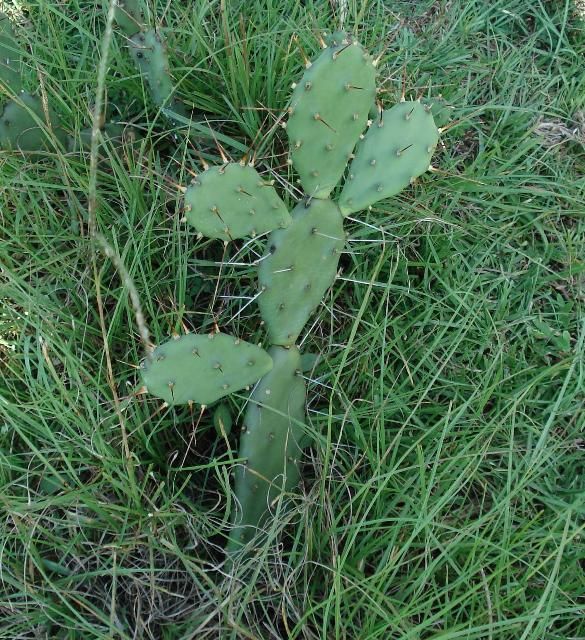Prickly Pear Cactus Control in Pastures
Prickly pear cactus is not a problem in every pasture in Florida. However, where it occurs, it is often the biggest and most difficult issue to manage. Prickly pear is problematic for several reasons, one of which is the way it reproduces. The weed spreads primarily by fragmentation. This means that each pad has the ability to root and form a new colony if it is detached from the "mother plant." This is an issue because many pasture managers use mowing as a means of controlling weeds and stimulating grass growth. Mowing prickly pear fragments the pads and dramatically increases the infestation. Although prickly pear does not form dense canopies and does not outcompete desirable forage grasses, its impact on grazing can be just as severe due to its barbed quills. Once the quills stick, they are difficult to remove and often break off in the skin, causing infection. Cattle are well aware of the quills and avoid grazing near prickly pear. This loss of grazing area can greatly decrease the amount of available forage in a pasture and can reduce cattle productivity. This document provides information on managing prickly pear cactus for owners and managers of grazinglands in Florida.

Credit: J. A. Ferrell, UF/IFAS
Control
Spot Applications
Traditionally, the most common herbicide program for prickly pear control has been triclopyr ester (Remedy Ultra, others) plus diesel fuel or basal oil. However, this program is costly due to high rates of triclopyr (20% solution) and substantial grass injury around the cactus plant. A better alternative is fluroxypyr, the active ingredient in Vista XRT or Flagstaff. Vista XRT/Flagstaff can be applied in water at 0.5 oz. per 1 gal to individual plants. Spray the pads to achieve good coverage but not to the point of runoff. Over-application can result in grass damage, but the damage will not likely be as severe as with the triclopyr program.
Broadcast Applications
Recent experiments conducted at UF/IFAS have found that broadcast applications of Vista XRT/Flagstaff herbicide at a rate of 22 oz/A, applied in either spring or fall, can effectively control prickly pear. Additionally, a split application of Vista XRT/Flagstaff at 11 oz/A in the spring followed by another 11 oz/A in the fall was also effective.
Note that, although Vista XRT/Flagstaff is effective on prickly pear, control is generally not rapid. After the application, the quills will turn gray and dry out while the pads will swell and turn a green/gray color (Figure 2). It is common for treated plants to persist this way for 6 to 8 months after the application. Just because the plants do not disappear quickly does not mean the herbicide is not working.

Credit: J. A. Ferrell, UF/IFAS
Consult your local UF/IFAS Extension office before applying Vista XRT/Flagstaff to pastures containing grasses other than bahiagrass or bermudagrass.


